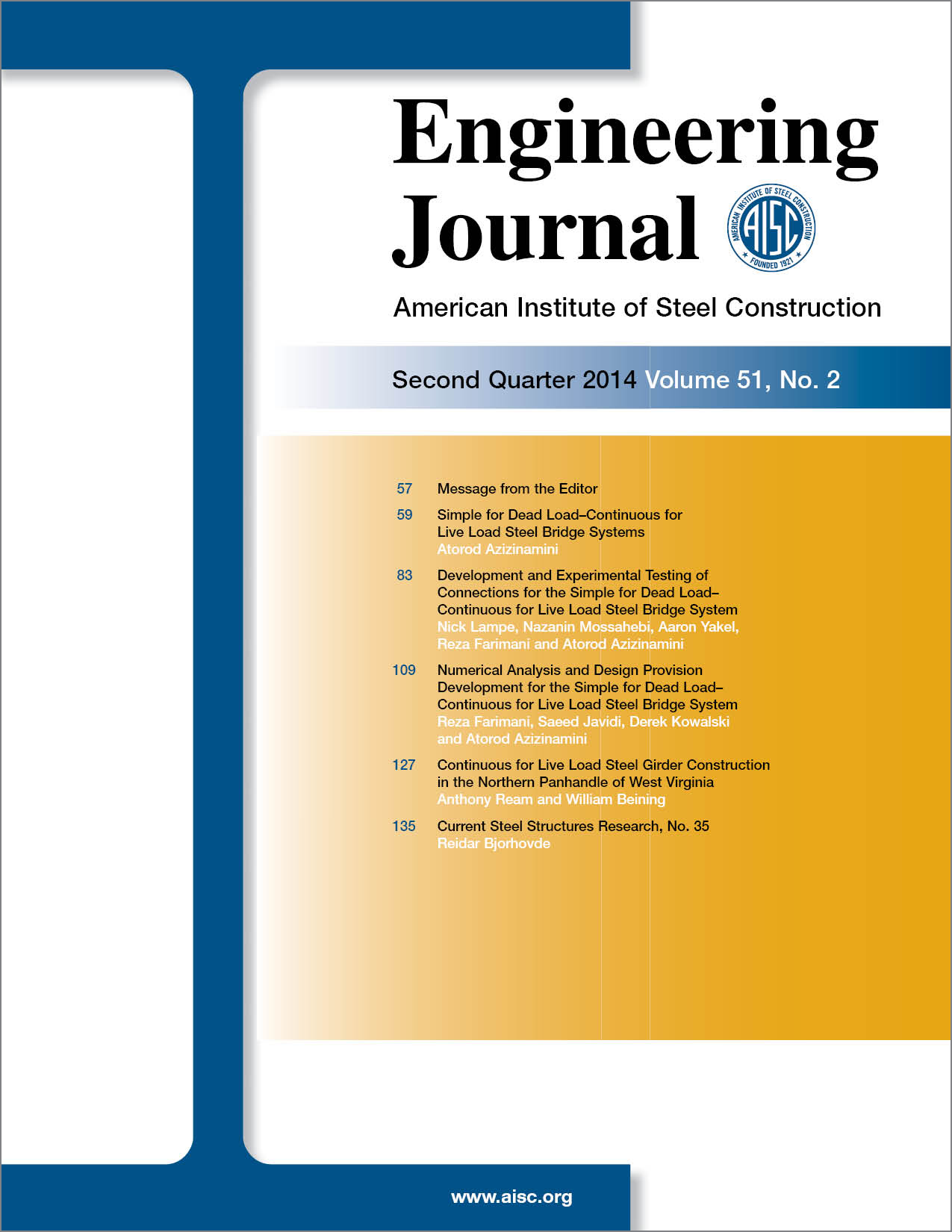Development and Experimental Testing of Connections for the Simple for Dead Load--Continuous for Live Load Steel Bridge System
DOI:
https://doi.org/10.62913/engj.v51i2.1062Keywords:
steel bridges, steel girders, SDCL, simple for dead load, continuous for live loadAbstract
The most critical aspect of the simple for dead load and continuous for live load (SDCL) bridge system is identifying a detail capable of connecting the girders over the interior supports. An experimental program was set up to identify and study the fundamental characteristics of an interior connection for the SDCL bridge system. Three full-scale test specimens were constructed and tested, each using different connection details for possible use in the SDCL bridge system. Each specimen was subjected to two types of loading: cyclic testing to simulate long term truck traffic loads, and an ultimate load test to determine the ultimate capacity of the system. Results of the tests indicated that connection details meeting the design provisions could consist of embedding the girder ends in the concrete diaphragm and would provide a good service life. The main objective in using a concrete diaphragm to join the girder ends over the interior support is to prevent crushing of the concrete adjacent to the compression flanges of the girder and embedded in the concrete diaphragm. One of the primary conclusions is that deck reinforcement is sufficient to develop continuity, and the top flange need not be continuous over the interior support.

